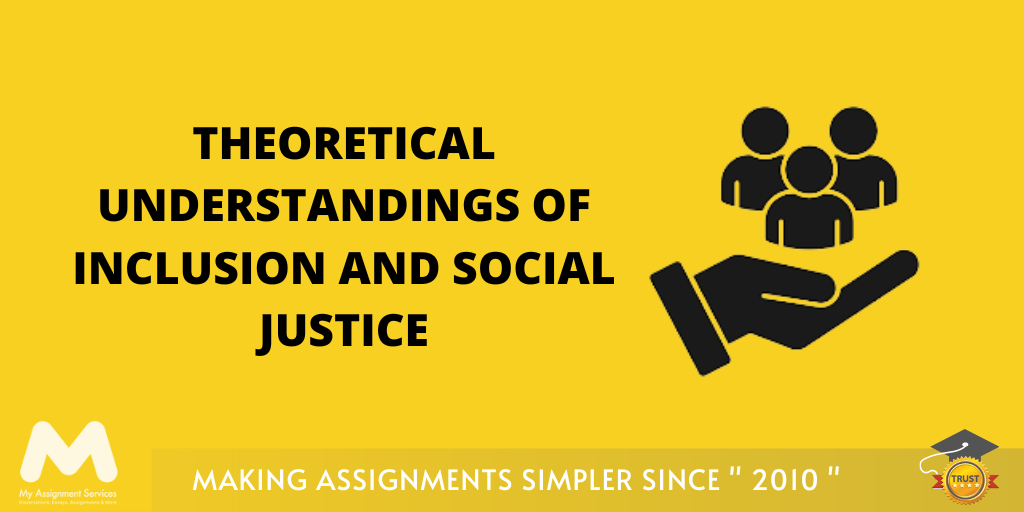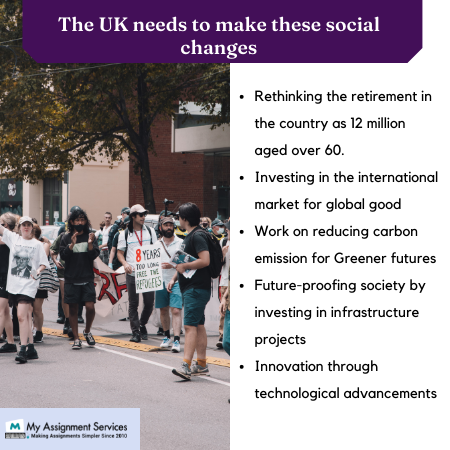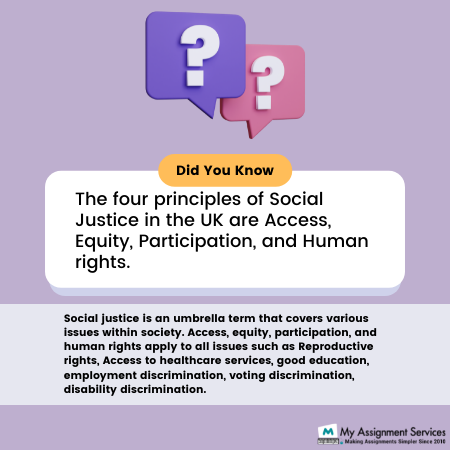
Despite educators' and researchers' collective efforts in addressing social inclusion, conceptual issues persist worldwide due to the difference in its meaning in different contexts. Almost all researchers from the education field feel burdened by the divided meanings within the field involving inclusion.
Also, a few of the inclusive practices might seem problematic in action. In areas where inclusion has been introduced in educational courses for a while now, the understandings of the term inclusion' still differ in theory and practice. The cultural and circumstantial aspects affect how social justice is perceived in various communities; hence we can say the idea of social justice is deeply rooted in the experiences of different individuals.
Meanwhile, the addition of social inclusion in academic courses indicates the interest of most countries to perceive disability as a primary issue that needs to be addressed differently.
Various types of scholarship exist that focus on inclusion based on the student's disability and custom need that ignores the efforts of full participation of the learner.
This blog shines a light on the various theories concerning inclusion and social justice in education. We'll analyse the different meanings and ideas of the same in contemporary literature. It is important to understand the widespread perception and the theoretical meaning to address the gaps in the current practices.

Various scholars and activists have questioned the idea of social justice as distributing goods to specific groups at certain periods. Such an idea has miserably failed to consider the traditional and social inequalities. The idea of social inclusion still needs to address various factors that put the students with disabilities at a disadvantage, be it social, health, gender poverty, etc. These two models are based on such theories.
Previously, inclusion was perceived as allowing children with disabilities to get classroom education with their peers. Most countries globally have accepted the United Nations Educational, Scientific and Cultural Organization (UNESCO) idea of inclusion, addressing disabled children's special needs.
To date, inclusion is bounded within traditional practices and, with public discourses concerning special education, has only provided access to common education curricula and environments for disabled students. Acknowledging inclusive means of education as developed on principle, schools provide education to all students, regardless of social and traditional differences or disability.
The academic policies in the United Kingdom previously promoted inclusive learning by enrolling both children with disabilities and without in the same school. Over time, many researchers and educators have addressed the issue to make it more accessible and special in the light of Inclusion and Social Justice.
People are legally protected from racial or social exclusion at work and in society under the Equality Act of 2010. It consolidated earlier anti-discrimination measures into a particular Act, simplifying the law and enhancing safety in certain cases.
Educators who provided a broader spectrum of inclusion continued to address the flaws in the traditional views on disabilities, or the special needs of students were obstructed. Inclusion should address students' inability to partici[pate than establishing special programs for a specific group.
But, for transforming the mainstream ideology and practices, for equal accommodation of all students conceptualising inclusion as the removal of traditional practices in the education of students with disabilities. Regardless of the origin of nonparticipation from disability, behaviours, financial crises, gender identity, or culture, inclusion should include social justice and redressing the unequal distribution of power and hierarchical difference, a view that benefits the marginalised groups.
The broad understanding of inclusion and social justice in education should encompass inclusive practices for disadvantaged or ruled-out students. Even UNESCO's perspective of inclusion has shifted past the traditional inclusion to comprehend and bridge the deficit in addressing issues concerning various factors, including ethnicity, social status, gender, mental health, and participation.
Students pursuing a management degree need to submit various coursework, essays, case studies, reports, etc. You might need to research rigorously for such assignments, and a lack of proper resources may put you in a tough situation. Get management assignment help in the UK from experienced professionals from the field. Enrol to get a live guided session with experts and free resources.
The divided perspectives and definitions of social justice have emerged due to situational and social differences or traditional perspectives. Various activists have written about the capitalist society that doesn't regard social justice as a redistribution of power and resources from the bottom of the social chain to the top. Fraser's Social Justice Theory and The social justice framework is useful in understanding the same.
The social justice theory proposed by Fraser states that social justice requires special arrangements for the disabled to participate in life with their peers. To overcome justice, one must overcome the system's obstacles that prevent equal participation of all. Fraser implies that such concepts imply that just the allocation of special social arrangements will help people to participate with their peers as equals.
Here, representation translates to an understanding that everyone has a sense of urgency in their lives, so everyone must be provided with a voice to participate in society. Such inclusion and social justice ideas seek better opportunities for personal development and freedom of expression, and the same should be encouraged at governmental levels to provide an equal participation opportunity to everyone.
Females account for 44 per cent of senior official respondents, while males account for 56 per cent. There were no non-binary or transgender people among the responders. 0.4 per cent of the United Kingdom population does not identify as male or female.- Brain Labs UK
Fraser's theory on social justice contributes to the current social justice study, and it is crucial to understand the current perspective of inclusion in education. The three major attributes of the theory distribution, addressing, and representation have successfully conceptualised the education sector's structural differences.
Though the reason for participation differences is not always described in every situation, understanding the three dimensions aids in generating intervention principles for approaching justice in diverse educational settings; the students' religious, ethnic, cultural and racial identities must be held when introducing the newer education structures.
Inclusion and social justice in education fail when students are denied access to financial resources and social and political representation required for fair participation with their peers. The parity principle is based on providing students equal education, and economic and social participation in society. Such also entails that students are provided with the same self-development and cultural recognition opportunities.

The inclusion of future generations is a necessity for impending generational justice which entails equal access to resources and fair representation in society for generations to come. Also, the responsibilities of the future generation are clear, yet the dilemma is that the current ideas may change in the future as well.
According to the UK's 1902 Education Act, the difference between middle and high schools was initially a social class division: the working class had no entry to higher education after middle school, whereas the wealthy would skip primary school and enter high school after being tutored at home.
The current generation's responsibility includes getting rid of structural social differences to overcome the divided ideas of Inclusion and Social Justice. Often the injustices and differences toward the minority group are due to racial segregation, poverty, and intentional negligence by the wealthy and powerful.
The implementation of social justice will be effective when every student is included in educational activities and procedures by addressing their personalised needs, and the distribution of resources should be equal along with cultural representation in systems. Doing so will ensure equal opportunities for every student to improve and participate equally with their peers.
Such concepts can be difficult to implement and comprehend; you may need to go through various resources to compile a case study for this. If you fail to find any useful resources, you may fill out the enrolment form to get free-of-cost resources and live sessions with experts that can help you through the process of compiling your assignments. Enrol today to get affordable management assignment help in the UK.

Hi, I am Dr. Cris Berger! I am an economist with a Ph.D., and working as a tenured professor at a prestigious university. I specialize in behavioral economics and recently published several influential papers. I have also recently received the John Bates Clark Medal and am actively working with Online Assignment Expert to introduce students to interesting topics and provide factual information.
1,212,718Orders
4.9/5Rating
5,063Experts
Turnitin Report
$10.00Proofreading and Editing
$9.00Per PageConsultation with Expert
$35.00Per HourLive Session 1-on-1
$40.00Per 30 min.Quality Check
$25.00Total
FreeGet
500 Words Free
on your assignment today
Trending now
The Student Corner
Subscribe to get updates, offers and assignment tips right in your inbox.
Popular Posts
Popular Posts
Request Callback
Doing your Assignment with our resources is simple, take Expert assistance to ensure HD Grades. Here you Go....
Lock in your expert now.
Pay the rest only after you're 100% satisfied.
Why this is a no-brainer:
Loved reading this Blog? Share your valuable thoughts in the comment section.
Add comment